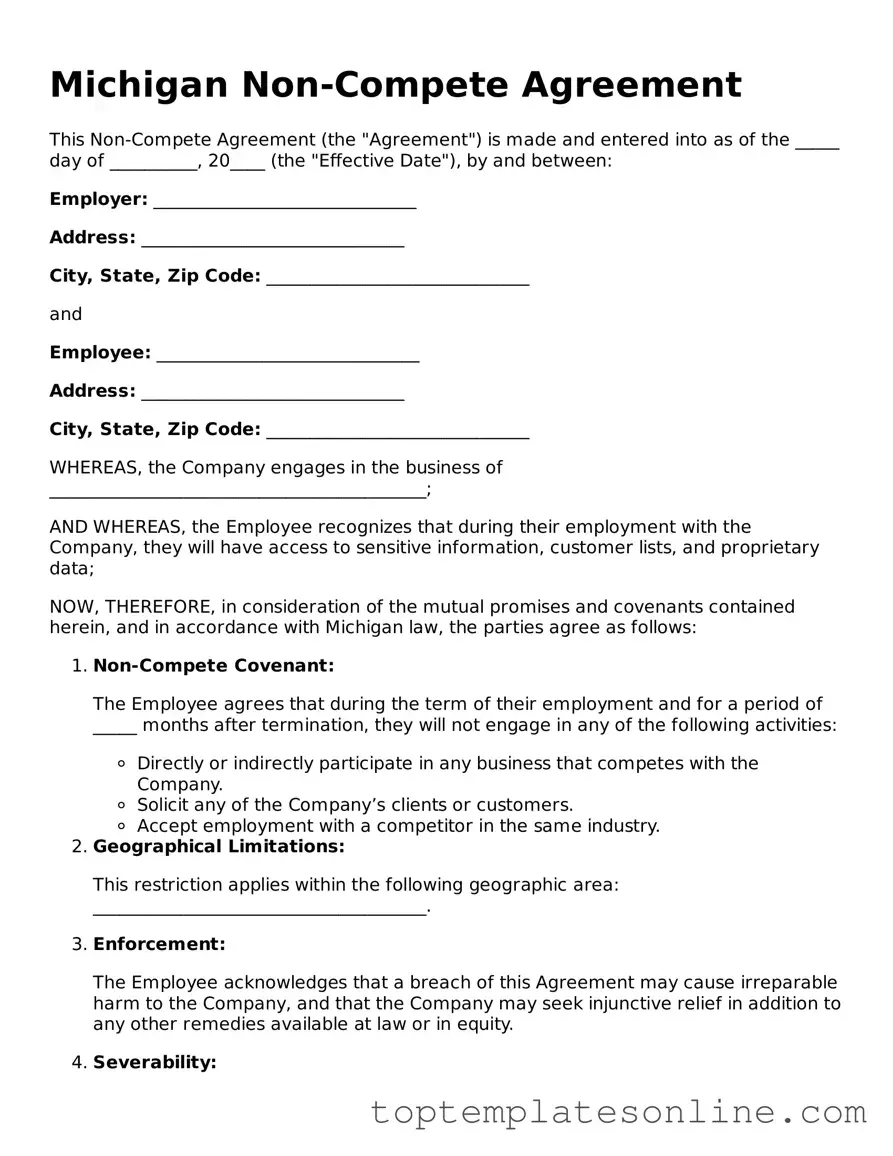Blank Non-compete Agreement Template for Michigan State
A Michigan Non-compete Agreement form is a legal document that restricts an employee from working for a competitor or starting a competing business for a specified period after leaving their job. These agreements aim to protect a company's sensitive information and competitive edge. Understanding the terms and implications of this form is essential for both employers and employees navigating their professional relationships.
Customize Non-compete Agreement Here
